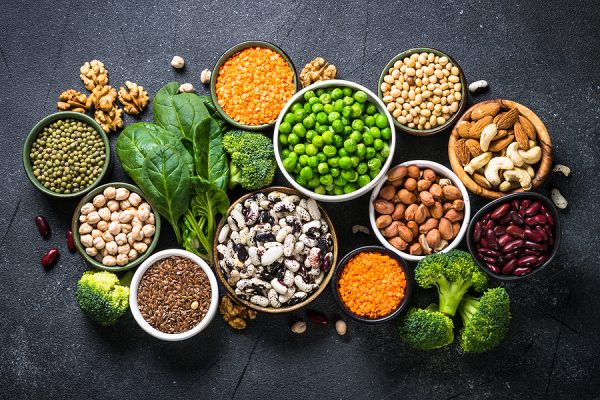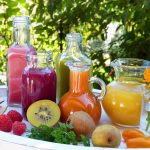By David Blyweiss, M.D., Advanced Natural Wellness
We are not eating enough protein in our later years. That’s a fact.
To top it off, as we age, our bodies have a harder time synthesizing protein. So even if you think you’re getting plenty of it in your diet, it won’t have the same affect it had on your bone and muscle mass as it did when you were younger.
This is one of the reasons we become frail and have an increased risk of falls and fractures as we grow older. In fact, we often see that patients who have fractured a hip or another bone aren’t getting enough protein.
It affects nearly everyone. But vegetarians, vegans and pescatarians have a much higher chance of hip fractures and fractures at other bone sites than their meat-eating counterparts. And, by far, vegans have more of a risk than anyone. They experience the most fractures at all sites… hip, leg, arm, ankle, wrist and anywhere else bone is vulnerable.
Again, low protein intake may be the key culprit.
That’s because people who shy away from animal products are getting their protein from plant-based sources. So maybe they’re eating a lot of peas and tofu. But this isn’t going to provide them with the protein and amino acid blend the body needs.
The reason is pretty simple. Most individual plant-based proteins don’t contain all nine essential amino acids. So they’re considered “incomplete” proteins. All of these amino acids are present in most meat and dairy products, which means they are considered “complete” proteins.
Meat Eater? Plant Eater? Mix up Your Proteins!
If you eat more of a vegetarian diet, you can mix up your protein sources to fill in the protein/amino acid gaps.
Even if you are a meat-eater, it’s a good idea to get your protein from a wide variety of sources.
My personal favorite plant-based sources of protein are beans, peas and lentils. These are all low-fat sources of protein and fiber, so they aren’t fattening. Put them in soups, make bean dip, use them to top your salads or make your own chickpea hummus.
And nuts… I love nuts! I eat a handful of nuts every single night. And there are so many different types of high-protein nuts to choose from; almonds, pistachios, walnuts and more.
Seeds, too. There is a lot of energy and protein in seeds. After all, a seed has to grow a whole new plant, right? Toss them into your yogurt. Blend them into smoothies. Use them to top your salads and veggies. (By the way, did you know that while quinoa, amaranth and buckwheat are officially classified as whole grains, they are really seeds?)
And of course there is always tofu. Surprisingly, tofu sales skyrocketed during the pandemic. Sales rose 40% higher in the first half of 2020 compared to the previous year. So people are buying it! But tofu isn’t your only soy-based option.
Other soy-based proteins include edamame and tempeh. Edamame are immature soybeans that are steamed or boiled. Tempeh is made from cooked and slightly fermented soybeans. Once it’s fermented, it can be pressed into a patty or loaf, and then cooked. It’s grainier than tofu and has a nutty flavor. Like tofu, it absorbs flavor from sauces and spices.
If you eat animal by products, eggs are another excellent source of protein. It’s a myth that they’re bad for you. But it’s a good idea to keep your eggs intact (not breaking the yellows) to keep the cholesterol in the eggs from oxidizing. They are much healthier if you prepare them over easy, over well, poached or boiled. Pastured eggs are the kind that I buy. They are, by far, the healthiest eggs you’ll find today.
Of course there’s always fish for the pescatarians. It’s not enough on its own, but when combined with other protein sources it makes a great contribution.
I recommend cold-water, wild-caught fish. Cold water species aren’t just high in protein, they have a lot more omega-3 fatty acids than other fish. The omega-3s are what allow the fish to bend its body and swim. The colder it is and the deeper they swim, the more omega-3 fatty acids they make.
You might think dairy should be on this list. It’s not.
Consuming cow’s milk may actually weaken your bones. Three or more glasses of dairy milk a day is associated with an increased risk of hip fracture. It’s also linked to an increased risk of early death. So I don’t recommend it.
Do Your Old Bones a Favor
Ultimately, we need a minimum of 60-75 grams a day of protein and older adults are just not getting it.
As a matter of fact, a 2019 study showed 31% of men and 45% of women between the ages of 51 and 60 were falling below protein intake recommendations. Between the ages of 61 and 70 the numbers were 37% for men and 48% for women. And after age 70 a whopping 42% of men and 50% of women were not eating enough protein.
So do your bones (and your muscles) a favor and start adding a variety of proteins to each of your meals.
I also recommend a “cocktail” of nutrients to help shore up your bone strength. Specifically, look for a good bone building supplement that includes microcrystalline hydroxyapatite (MCHC), along with magnesium, potassium and vitamins D and K.
And don’t forget to do your strength training! It will work hand-in-hand with that protein to help build both bone and muscle mass.
SOURCES:
Bonjour JP. Protein intake and bone health. Int J Vitam Nutr Res. 2011 Mar;81(2-3):134-42.
Tong TYN, Appleby PN, Armstrong Meg, et al. Vegetarian and vegan diets and risks of total and site-specific fractures: results from the prospective EPIC-Oxford study. BMC Med. 2022. 18, 353.
Krok-Schoen JL, Archdeacon Price A, Luo M, Kelly OJ, Taylor CA. Low Dietary Protein Intakes and Associated Dietary Patterns and Functional Limitations in an Aging Population: A NHANES analysis. J Nutr Health Aging. 2019;23(4):338-347.
Michaëlsson K, Wolk A, Langenskiöld S, Basu S, Warensjö Lemming E, Melhus H, Byberg L. Milk intake and risk of mortality and fractures in women and men: cohort studies. BMJ. 2014 Oct 28;349:g6015. Malmir H, Larijani B, Esmaillzadeh A. Consumption of milk and dairy products and risk of osteoporosis and hip fracture: a systematic review and Meta-analysis. Crit Rev Food Sci Nutr. 2020;60(10):1722-1737.




